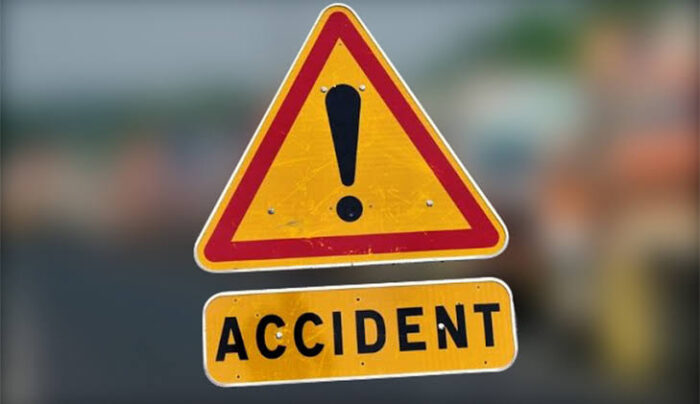
In the realm of personal injury law, motor vehicle accident cases stand out as some of the most frequently encountered scenarios. Despite their prevalence, each case presents its unique set of challenges and intricacies, making them anything but routine. The complexity inherent in these cases stems from a variety of factors: the circumstances of the accident, the parties involved, the laws governing vehicular accidents, and the often significant physical and emotional toll on those involved. For attorneys navigating this intricate landscape, a deep understanding of the nuances of each case, coupled with meticulous preparation, is indispensable. It’s not merely about representing a client; it’s about comprehensively understanding their situation and advocating for their rights and entitlements in the aftermath of a potentially life-altering event.
The crux of building a strong motor vehicle accident case lies in gathering and effectively leveraging specific pieces of information. This process goes beyond the basic collection of facts; it involves a nuanced analysis of details from multiple perspectives. For attorneys, this means delving into the minute aspects of the accident scene, understanding the client’s medical and financial situation, and navigating the complex interplay of insurance and liability. The goal is to construct a narrative that not only accurately represents the events and consequences of the accident but also resonates with the legal standards for compensation and justice. In doing so, these legal professionals must balance their legal expertise with a compassionate understanding of their client’s ordeal, ensuring that the human element of the case is not lost in legal technicalities.

1. Detailed Accident Report
The foundation of a strong motor vehicle accident case is a comprehensive and accurate accident report. This report, typically prepared by the police, provides an official account of the accident, including the date, time, and location, along with a description of the incident. Here’s why it’s vital:
- Establishes the Basic Facts: The report is a primary source for the basic facts of the case. It’s crucial in establishing what happened and where it happened.
- Identifies Involved Parties: It lists all parties involved in the accident, which is essential for any legal proceedings.
- Notes on Weather and Road Conditions: These details can be instrumental in establishing factors contributing to the accident.
- Independent Witness Statements: If there are any witnesses, their accounts are often included in the report, offering an unbiased perspective on the incident.
- Initial Assessment of Fault: Though not conclusive, the report might contain the responding officer’s initial assessment of fault, which can influence the case’s direction.
2. Evidence of Negligence
In personal injury law, proving negligence is key to a successful motor vehicle accident case. Negligence demonstrates that the other party failed to exercise reasonable care, leading to the accident. Critical elements include:
- Duty of Care: Establishing that the defendant owed a duty of care to the plaintiff, such as obeying traffic laws.
- Breach of Duty: Showing how the defendant breached that duty, like running a red light.
- Causation: Linking the breach directly to the accident, demonstrating that the defendant’s action or inaction was the direct cause.
- Damages: Proving that the accident resulted in actual damages, whether bodily injury or property damage.

3. Medical Records and Documentation of Injuries
Medical records are the bedrock of any claim for bodily injuries. They serve multiple purposes:
- Confirming the Extent of Injuries: Detailed medical records outline the nature and extent of the injuries suffered.
- Linking Injuries to the Accident: They are crucial in establishing a direct correlation between the accident and the injuries claimed.
- Documenting Treatment and Recovery: Ongoing medical records show the progression of injuries, the treatment required, and the recovery process, including any long-term impacts.
- Expert Opinions: In some cases, medical experts may provide additional insights or opinions on the injuries’ severity and long-term effects, which can significantly influence compensation claims.
4. Documentation of Financial Losses
To ensure fair compensation, it is critical to document all financial losses related to the accident. This encompasses:
- Medical Expenses: All costs associated with medical treatment, including hospital stays, medications, physical therapy, and any future medical expenses related to the injuries.
- Lost Wages: Compensation for any work missed due to the accident, including lost earning capacity if the injuries lead to long-term disability.
- Property Damage: Costs for repairing or replacing the vehicle and any other damaged property.
- Additional Financial Burdens: Any other out-of-pocket expenses incurred as a result of the accident, like travel costs to medical appointments.

5. Witness Testimonies and Statements
Witnesses can provide an invaluable perspective in a motor vehicle accident case. Their testimonies often add credibility and support to the claimant’s account of the accident.
- Eyewitness Accounts: Bystanders or passersby who witnessed the accident can offer unbiased accounts of what happened, which can be crucial in cases where the facts are disputed.
- Expert Witnesses: In some cases, it may be beneficial to bring in expert witnesses like accident reconstruction specialists or medical experts to provide professional opinions that support the case.
- Character Witnesses: In cases involving non-economic damages like pain and suffering, character witnesses can testify about the impact of the accident on the victim’s life.
Building a strong motor vehicle accident case requires meticulous attention to detail and a comprehensive gathering of information. A detailed accident report lays the groundwork, establishing the basic facts of the case. Proving negligence is crucial, as it establishes the liability of the other party involved. Medical records and documentation of injuries provide tangible evidence of the physical impact of the accident, while financial documentation outlines the economic toll. Finally, witness testimonies add depth and credibility to the case, offering both objective and subjective accounts of the accident and its repercussions.
For attorneys, these five pieces of information are instrumental in constructing a solid case that can withstand scrutiny and increase the chances of a favorable outcome for their clients. In the intricate dance of legal proceedings, these elements are not just individual pieces of information but interlocking gears that drive the case forward towards success.
















